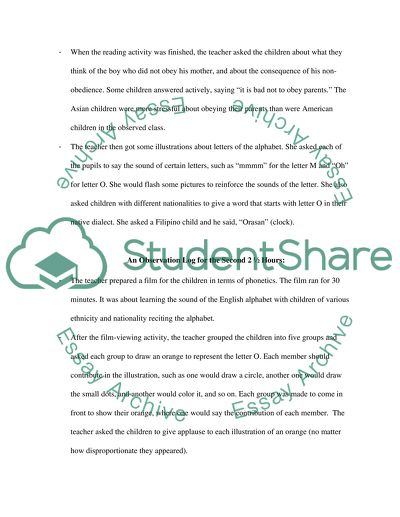Cite this document
(“Reflection on a pretend observation of a k-3 classroom with children Essay”, n.d.)
Reflection on a pretend observation of a k-3 classroom with children Essay. Retrieved from https://studentshare.org/sociology/1548192-reflection-on-a-pretend-observation-of-a-k-3-classroom-with-children-of-diverse-backgrounds
Reflection on a pretend observation of a k-3 classroom with children Essay. Retrieved from https://studentshare.org/sociology/1548192-reflection-on-a-pretend-observation-of-a-k-3-classroom-with-children-of-diverse-backgrounds
(Reflection on a Pretend Observation of a K-3 Classroom With Children Essay)
Reflection on a Pretend Observation of a K-3 Classroom With Children Essay. https://studentshare.org/sociology/1548192-reflection-on-a-pretend-observation-of-a-k-3-classroom-with-children-of-diverse-backgrounds.
Reflection on a Pretend Observation of a K-3 Classroom With Children Essay. https://studentshare.org/sociology/1548192-reflection-on-a-pretend-observation-of-a-k-3-classroom-with-children-of-diverse-backgrounds.
“Reflection on a Pretend Observation of a K-3 Classroom With Children Essay”, n.d. https://studentshare.org/sociology/1548192-reflection-on-a-pretend-observation-of-a-k-3-classroom-with-children-of-diverse-backgrounds.


